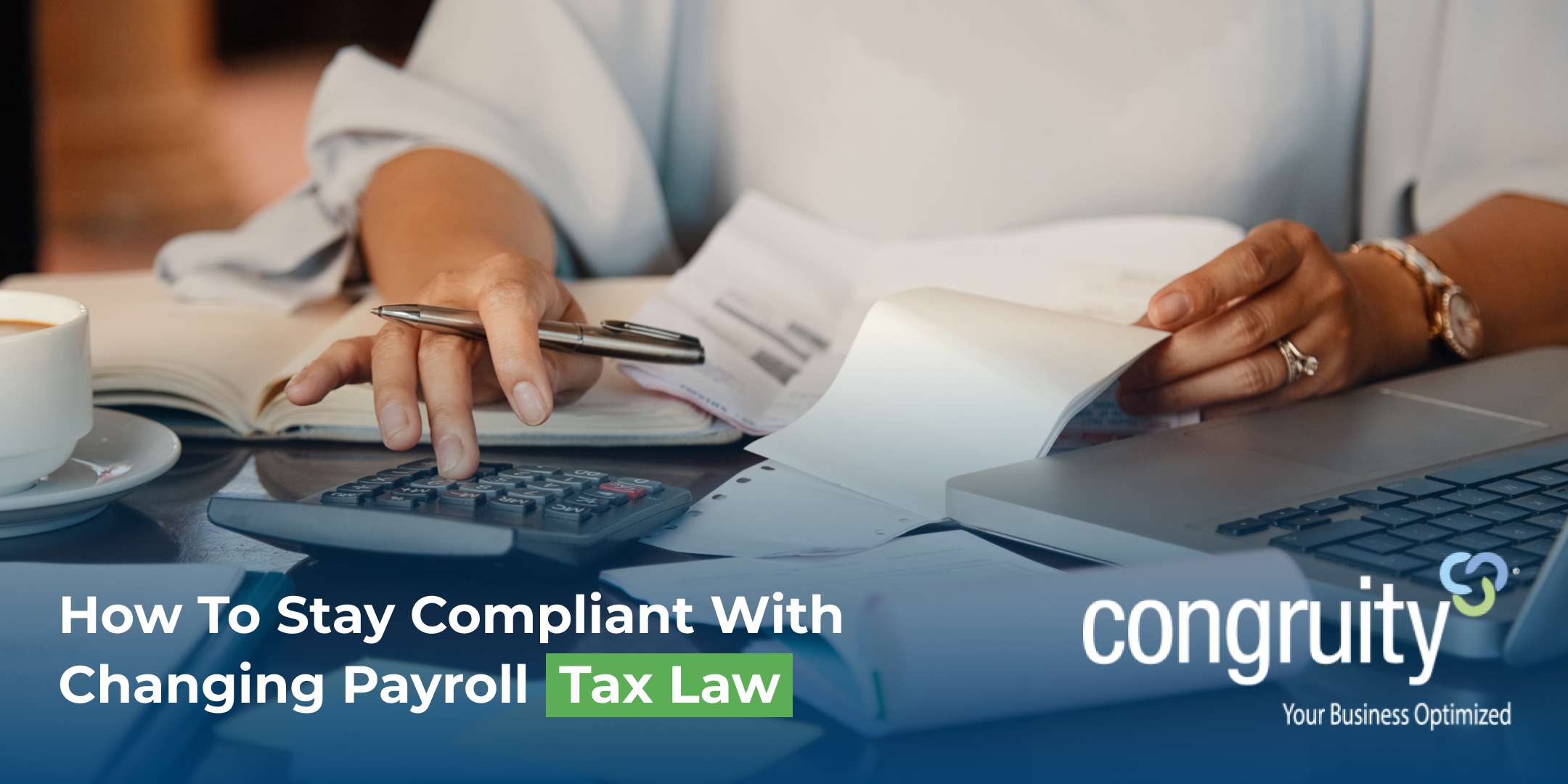Top HR Outsourcing Company Congruity:
Payroll tax compliance isn’t just about paying taxes on time. It’s about understanding the rules, keeping up with federal and state-level changes, and setting up systems to avoid costly mistakes. As the tax situation continues to change in 2025, especially with the rise of remote work and teams in different states, staying compliant has become both more complicated and more important.
In this guide, we’ll break down what payroll tax compliance means, what’s changing, and how U.S. employers can stay prepared. Whether you’re handling payroll internally or working with a PEO like CongruityHR, these tips will help you protect your business and employees.

Payroll tax compliance means the correct calculation, withholding, reporting, and payment of taxes related to employees. In the U.S., this includes:
Employers are responsible for making sure taxes are taken out correctly, sent in on time, and reported through forms like 941s, W-2s, and 1099s.
Not following these rules can lead to audits, penalties, and even legal action.
Federal and state tax rules keep changing. For example, the IRS has updated Social Security wage limits and W-4 form rules for 2025. At the state level, several areas have introduced new family leave rules or changed unemployment thresholds.
If your employees work across state lines, you may need to register and pay taxes in more than one place. Each state has its own set of rules for withholding and unemployment insurance.
Wrongly classifying workers as independent contractors instead of employees can lead to serious penalties. The Department of Labor and IRS are watching this issue more closely.
Tip: Bookmark IRS and state labor department websites or sign up for their updates.
Managing Multistate Payroll
Each state has different tax rates, wage limits, and filing times. For remote workers, you may need to withhold taxes based on where the employee works, not where your company is located.
Staying Ahead of Filing Deadlines
Missing or late payroll filings can result in penalties of up to 15% of the unpaid tax. Handling filings for several states can make it easy to lose track.
Outdated Payroll Systems
Many businesses still use manual processes or old systems that don’t automatically update tax tables. This increases the chance of mistakes.
Keeping Records Ready for Audits
The IRS requires you to keep payroll records for at least four years. These must be complete and easy to find if an audit happens.
Use systems that:
Check for:
Make sure they understand:
A PEO like CongruityHR can:
End-to-End Payroll Management
From hiring new employees to year-end reporting, PEOs manage every part of payroll while making sure all rules are followed.
Local Expertise
PEOs have compliance experts who stay updated with state and federal changes, ensuring you never miss an important update.
Shared Legal Responsibility
In many cases, a PEO shares the responsibility for tax compliance, adding a layer of protection for your business.
If you checked fewer than 5 boxes, it may be time to consult with a PEO.
Q: What happens if I miss a payroll tax deadline?
A: You may face fines, interest charges, or even legal action. The IRS can fine up to 15% of unpaid taxes.
Q: How often do payroll tax rates change?
A: Federal rates change once a year. State and local rates can change more often depending on conditions.
Q: How can a PEO help with multistate compliance?
A: PEOs handle tax registration, withholding, and filing across all the states where your employees work.
Q: Can I manage compliance without outside help?
A: Yes, but it takes a lot of time and knowledge. For businesses with employees in several states, a PEO often saves time and reduces risks.
Q:Is payroll tax the same as income tax?
A: No, the difference between payroll tax and income tax is that payroll tax compliance is dependent on both employees and employer whereas income tax is the total responsibility of the employer or individuals earning income from performing a business transaction.
Payroll tax compliance in 2025 is about more than just avoiding penalties — it’s about running a strong and trustworthy business.
By staying informed, using the right tools, and partnering with experts, you can face changes with confidence.